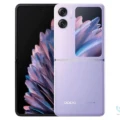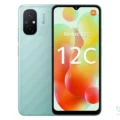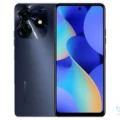Vivo V9 vs Huawei P20 Lite vs OPPO F7 vs ASUS Zenfone 5Q
Feelin’ the heat of Summer 2018? Let’s add some more heat as we display the specs comparison of Smartphones under Php 20,000 launched this Q1 in the Philippines!
We have the following smartphones in no particular order below:

ASUS Zenfone 5Q

Vivo V9
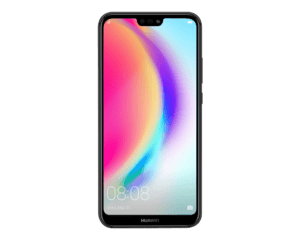
Huawei P20 Lite

OPPO F7
We would like you to consider your lifestyle and budget first before deciding what to purchase or buy it all so you won’t have to choose one? right? :D Anyway, that should be the two things to consider in your decision.
Take your pick! :) Let us know your thoughts, comment it down below! ;)
Comments
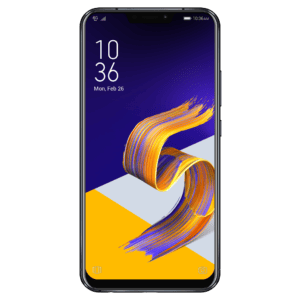


| |
| Price | ₱16,995.00 ₱15,990.00 |
| Our Rating | |
| Brand | ASUS Huawei |
| Category | Smartphones Smartphones |
General
| Launch | 14 April, 2018 19 April, 2018 |
| Status | Available Available |
Design
| Dimensions | 148.6 x 71.2 x 7.4 mm |
| Weight | 168.3 g 145 g |
| Colors | Midnight Black, Rouge Red, Moonlight White Midnight Black, Sakura Pink, Klein Blue |
Display
| Size | 6 Inches 5.84 Inches |
| Protection Display Protection => Gorilla Glass is a special alkali-aluminosilicate glass shield with exceptional damage resistance that helps protect mobile displays from scratches, drops, and bumps of everyday use, It is always better to go for a smartphone with Gorilla Glass for that added protection and peace of mind. | Corning Gorilla Glass |
| Resolution | FHD+ (2160 x 1080 resolution), 402 PPI FHD+ (1080 x 2280 Pixels), 432 PPI |
Software
| Operating System OS => Every computer system run on a base software called Operating System (OS). Operating System controls all basic operations of the computer (such as smartphone, PDAs, tablet computers and other handheld devices). The Operating System allows the user to install and run third party applications (apps), apps are used to add new functionality to the device. | Android 8.0 Oreo Android 8.0 Oreo |
| User Interface UI or user interface of a device is the look and feel of the on-screen menu system. How it works, its color scheme, how it responds to button presses, all of these things are part of the user interface. | ZenUI 5.0 EMUI 8.0 |
Camera
| Front Camera is able to capture photographs and usually videos, The most important characteristics of a camera are the resolution (measured in megapixels), lens focus type (fixed or automatic), higher megapixel cameras are known to capture higher quality photos, but not always a good measurement of the photos quality. | 20-megapixel (f/2.0) + 8-megapixel (120-degree wide-angle) 16 MP |
| Rear | 16-megapixel (f/2.2) + 8-megapixel (120-degree wide-angle) PDAF LED flash 16MP and 2MP (Dual-Camera) |
| Rear Camera Features | f/2.0 Aperture f/2.0 Aperture & 1.12 µm Pixel Size |
Hardware
| Chipset Chipset is a group of integrated circuits designed to perform one or a more dedicated functions, often with real time computing constraints, Popular smartphones are equipped with more advanced embedded chipsets that can do many different tasks depending on their programming. | Qualcomm Snapdragon 636 Kirin 659 |
| CPU CPU (Central Processing Unit) mostly known as processors, CPU processes instructions in order to carry out certain functions that make your device operate properly. Processors are often described as the brain of computers, smartphones and tablets, Smartphones and tablets rely on processors to carry out their every task, Processors are an incredibly important factor in selecting any type of computing device, including your smartphone. | 1.8GHz 4 x Kryo 260 + 1.8GHz 4 x Kryo 260 2.36GHz Quad Core Cortex-A53 + 1.7GHz Quad Core Cortex-A53 |
| GPU GPU (Graphics Processing Unit) is a single-chip processor designed to rapidly manipulate and alter memory to accelerate the creation of images in a frame buffer intended for output to a display, This includes things such as lighting effects, object transformations, and 3D motion. | Adreno 509 Mali-T830 MP2 |
| RAM (Memory) RAM (Random Access Memory) is a type of computer memory that can be accessed randomly, any byte of memory can be accessed without touching the preceding bytes that allows information to be stored and accessed quickly from random locations. RAM is the most common type of memory found in computer systems, smartphones, tablets and other electronic devices. | 4 GB 4 GB |
| Internal Storage Internal Storage is a data storage space (flash memory) mostly used in smartphones, tablets and other electronic devices where operating system, apps, music, photos, videos, files and other user data Is stored. | 64GB 64GB |
| Card Slot Memory Card Slot is a special slot for inserting a memory card. Memory cards allow you to expand the phone's built-in memory, A memory card (sometimes called a flash memory card or a storage card) is a small storage medium used to store data such as text, pictures, audio, and video, for use on small, portable or remote computing devices such as mobile phones, mp3 players, digital cameras. | 400GB via microSD 256GB via microSD |
| Sensors Sensors are electronic components that detects and responds to some type of input from the physical environment. The specific input could be light, heat, motion, moisture, pressure and location, The output is generally a signal that is converted to use in computing systems, a location sensor, such as a GPS receiver is able to detect current location of your electronic device. | Fingerprint Sensor, Proximity Sensor & Ambient Light Sensor, Compass, Gyroscope & Accelerometer Face Recognition & Fingerprint Sensor, Proximity Sensor & Ambient Light Sensor, Compass, Gyroscope & Accelerometer |
Network
| Networks | Dual SIM(Nano-SIM) Dual SIM(Nano-SIM) |
| SIM SIM (Subscriber Identity Module) is a small card that contains mobile network subscriber's account information. This allows the phone using the card to attach to a mobile network. The SIM card is most commonly associated with GSM and UMTS mobile networks. Moving a SIM card from one phone to another allows a subscriber to switch mobile phones without having to contact their mobile network carrier. SIM cards can also be used by a phone to store limited amounts of data, such as phone numbers and text messages. | 4G LTE, 3G HSPA+, 2G EDGE & GPRS Networks 4G LTE, 3G HSPA+, 2G EDGE & GPRS Networks |
Connectivity
| Bluetooth Bluetooth is a wireless communications technology for exchanging data between mobile phones, headsets, computers and other network devices over short distances without wires, Bluetooth technology was primarily designed to support simple wireless networking of personal consumer devices. | Bluetooth 4.1 Bluetooth 4.2 |
| Wi-fi Wi-Fi is a popular wireless networking technology using radio waves to provide high-speed network connections that allows devices to communicate without cords or cables, Wi-Fi is increasingly becoming the preferred mode of internet connectivity all over the world. | Wi-Fi 802.11 b/g/n/ac (Dual Band) Wi-Fi 802.11 b/g/n/ac (Dual Band) |
| USB Port Smartphone's USB Port available | USB Type-C USB Type-C |
| GPS GPS The Global Positioning System is a satellite-based radio navigation system, GPS permits users to determine their position, velocity and the time 24 hours a day, in all weather, anywhere in the world, In order to locate your position, your device or GPS receiver must have a clear view of the sky. | GPS, A-GPS, GLONASS, BDS A-GPS |
| NFC NFC (Near field communication) is a set of standards for smartphones and similar devices to establish peer-to-peer radio communications with each other by touching them together or bringing them into proximity, usually no more than a few inches. |
Media
| FM Radio |
Battery
| Charging | HUAWEI Quick Charge 2.0 (9V/2A) |



|



